September 2023
Fig.1
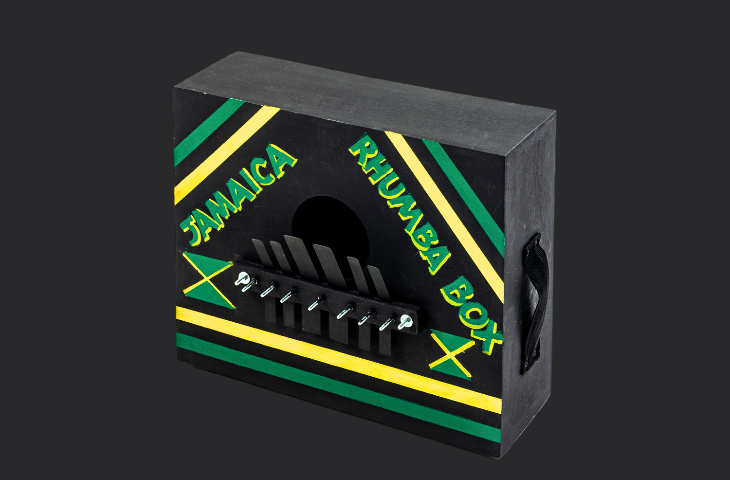
Rhumba box, Philip Supersad, Kingston (Jamaica), 2021, inv. 2022.0170
Fig.2
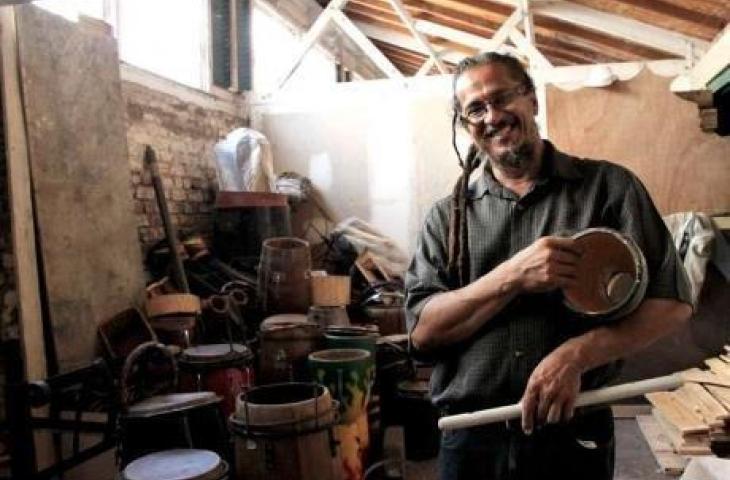
Philip Supersad in his studio, downtown Kingston, 2012 © The Jamaica Gleaner
Fig.3
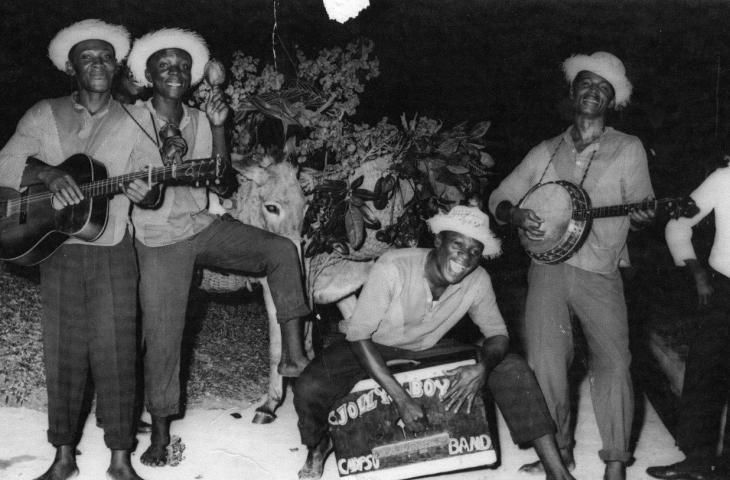
The Jolly Boys in 1958 at Round Hill Hotel, Jamaica
Fig.4
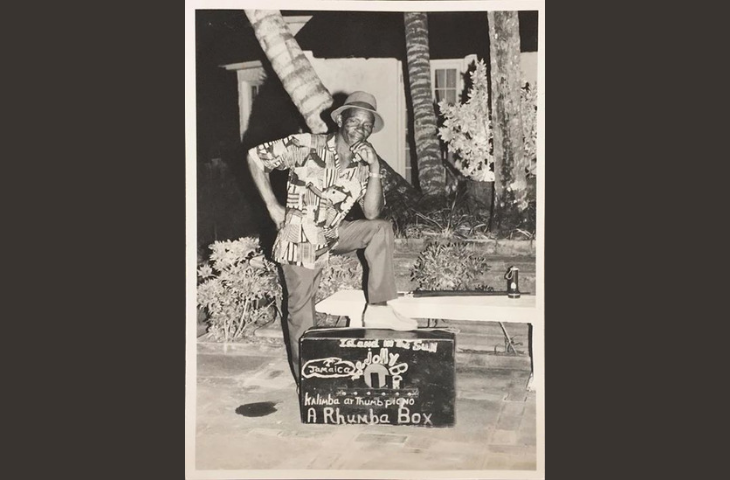
Derrick ‘Johnny’ Henry of the Jolly Boys
Fig5
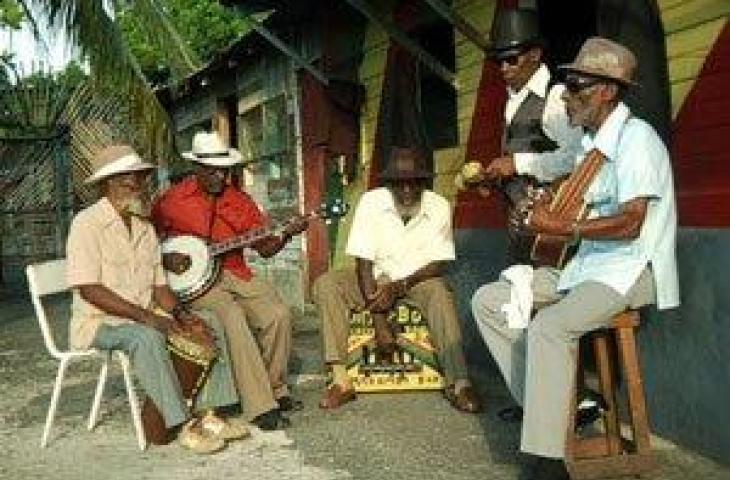
The Jolly Boys, around 2010 © www.reggaeville.com
In October 2022 the embassy of Jamaica donated a rhumba box to the MIM. It is the first Jamaican instrument and also the first rhumba box that enters MIM's collection.
The rhumba box is a lamellophone - commonly called ‘sanza’ - with a large wooden box which serves as a resonator. The musician, sitting on the box, plucks the large bamboo or metal keys with the fingers of his right hand, while he rhythmically taps on the box with the left hand. The keys vary in number and order; they are arranged in such way that local melodies fit the fingering well.
The rhumba box is a migrant. The African lamellophone crossed the Atlantic Ocean in the 17th century when enslaved Africans were deported to the ‘New World’. Black Africa has known musical instruments consisting of a series of lamellae or keys attached to a resonating body for centuries. Having originating in the Cameroun savannah and the area around the lower Zambezi river, these lamellophones have subsequently spread and today can be found in almost every single black African community, presenting a wide variety of shapes and sizes.
The Jamaican rhumba box possibly developed from the model of the Cameroon Grasslands and Eastern Nigeria region, where large lamellophones with bamboo keys are played. The buzzing devices – vibrating and rattling objects made out of metal, shell, wood, or stone and attached to the sound box or board – so typical for the sub-Saharan lamellophones, are absent in the Caribbean version.
While African sanzas serve to relax, dance, call for rain, talk to the ancestors, the Jamaican rumba box is mainly used to play the Mento, a typical Jamaican musical style, predating reggae and ska. The music was a product of the primarily rural agricultural society and a part of the planting and reaping culture of emancipated Jamaicans. This music blended the long tradition of work songs from the Jamaican slave plantations system with church songs from the US after the civil war and English folk songs – the British had captured Jamaica from the Spanish in 1655. Mento music is rather slow and in quadruple time, with a strong accent on the last beat of the bar. The tunes are usually in major keys, with melodies that lend themselves to harmonization with the primary chords.
Mento's instrumentation was mainly home-made, consisting of shakers, gourds, graters, flutes, hand drums, fiddles, banjos, and the signature rhumba. Still today, Mento is recognizable by its acoustic sounds.
Mento became a feature of Caribbean music in the 1920s. Typical mento lyrics have ‘‘a humorous slant, [and] a focus on everyday issues such as poverty and politics, a light-hearted feel and often, sexual innuendo!’.[1] Many 'biting' mento lyrics were initially viewed as unsuitable and censored for political and social reasons. However, the genre thrived underground for many years. The golden years were in the 1940s and 50s, when Mento became the heartbeat of the nation, with vedettes such as Louise Bennett, Count Lasher, Lord Flea and Harry Bellafonte. The genre, full of double entendre, flourished until Jamaica’s independence in 1962 when it became overshadowed by reggae and rocksteady.
Mento was also important to Jamaica's music as the genre was the first to be recorded, initially on wax roles, with lyrics sold as sheet music, later on LP and cassette. Nowadays the Mento heritage is kept alive by groups such as the Jolly Boys, who revived Mento in the 1970s.
Genres similar to Mento, developed from the fusion of African and European musical influences, were Calypso in Trinidad-Tobago and Mambo in Cuba.
During the 19th century, the Afro-Caribbean model of the rhumba box returned to West-Africa through the ‘dropping’ of freed African-American slaves in Freetown (Sierra Leone), in Liberia, and Libreville. In Nigeria the Agidigbo was a result of a replanting of African musical elements after the return of Afro-American after the abolition in 1888.
[1]https://www.togethertv.com/blog/mento-has-been-described-%E2%80%98jamai…
Text: Saskia Willaert
Bibliography
Rohan Budhai. ‘Mento vs Calypso’. Jamaica Observer 12 January 2023
Gerhard Kubik. Kalimba, Nsansi, Mbira - Lamellophone In Afrika. Museum für Völkerkunde, 1998
‘Mento: Reggae’s Forgotten Past.’ Clash Magazine 52.21 July 2010
‘The oldest Swingers: The Jolly Boys’. The Guardian 25 July 2010